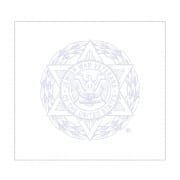What is Sigd?
By Larry Jasper, National Editor
Sigd is an Ethiopian Jewish holiday held 50 days after Yom Kippur. It is about accepting the Torah and yearning for Israel and the Temple. It is thought to be the date on which G-d first revealed himself to Moses. For centuries Ethiopian Jews have used this holiday to plead to return to Zion.
It is also a tradition for the community to hold communal introspection in addition to the self-examination during Yom Kippur because in order to be worthy of returning to Jerusalem from exile, you must engage in communal introspection and repentance. Sins of community members are forgiven during Yom Kippur and the subsequent 50 days. On the 50th day, following communal introspection, the community returns to the Yom Kippur experience with prayers and a fast.
The Ethiopian Jews are also known as Beta Israel. They are one of the oldest Diaspora communities. The Torah refers to the land of Cush. The prophet Isaiah spoke of the return of the Jews who were exiled to a variety of lands, including Cush, which is now part of Ethiopia and the Sudan.
In the ninth century, the story of Eldad ha-Dani became well-known. He maintained that the tribe of Dan chose to leave the holy land rather than join the fight between Rehoboam and Jeroboam when the Kingdom of David split. The tribe went to the land of Cush. It is probably from this account that the idea arose that the Ethiopian Jews were descendants of the tribe of Dan.
The Ethiopian Jews have continued to practice Judaism for centuries despite persecution and isolation. Because of isolation their type of Judaism differs from that practiced elsewhere. The most significant difference is that Ethiopian Jews base their beliefs on the Torah and some oral traditions passed from generation to generation. The rest of the Jewish world bases its practices on both written law (the Torah) and oral law. Oral law is the rabbinical interpretation of the Torah which was largely codified by the year 400 in the Talmud.
Since the Ethiopian Jews were unaware of the oral law, they were not familiar with any of the practices, rituals, and interpretations developed over the centuries by the rabbis. The Ethiopian Jews also had their own interpretations of the Torah and did not fulfill many of the biblical commandments, including the wearing of prayer shawls (tzitzit), posting of mezuzot on doorposts, or sounding the shofar on Rosh Hashanah.
The Ethiopian Jews also did not speak or write Hebrew, but speak Amharic, the official language of Ethiopia. Jews living in the region of Tigre speak Tigrinya. Their holy books are written in Geez, a language considered holy and used also by Ethiopian Christians. Their Torah is handwritten on parchment as a book, rather than as a scroll.
The first modern contact with the Beta Israel occurred in 1769, when Scottish explorer James Bruce stumbled upon them while searching for the source of the Nile River. He found them impoverished, heavily taxed, and oppressed. His estimates at the time placed their population at 100,000.
The Ethiopian Jewish community lived in complete isolation from other Jewish communities for many centuries. For this reason, the Ethiopian Jewish community developed many holidays and celebrations that do not exist in other Jewish communities. In the mid-20th century, during civil war and famine in Ethiopia, many Beta Israel were air-lifted to Israel.
The Knesset passed the Sigd Law in 2008, declaring the 29th of Cheshvan as a national holiday.
In Israel, it is celebrated for an entire month leading up to the 29th of Cheshvan and is an opportunity to raise Ethiopian Jewish visibility and educate Israeli Jews about the Beta Israel.
Today, since most members of the Ethiopian Jewish community have made Aliyah to the State of Israel and learned to speak Hebrew, during the holiday members of the community travel to Jerusalem and visit the Wailing Wall and the promenade in the city’s Armon Hanatziv neighborhood. The holiday serves as an annual gathering of the entire Ethiopian community and its members view it as an opportunity to strengthen the connection with their roots and culture.
The Kessim (Ethiopian Jewish religious leaders), dressed in their traditional robes, carry the Torah scrolls while holding multi-colored umbrellas. They stand on an elevated stage, read excerpts from the Bible, and recite prayers before members of the community. Public officials attend the celebration and greet the audience, and many of the community members continue to fast until late in the afternoon.
Volume 75. Number 4. 2021




